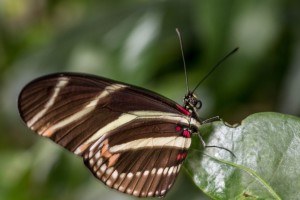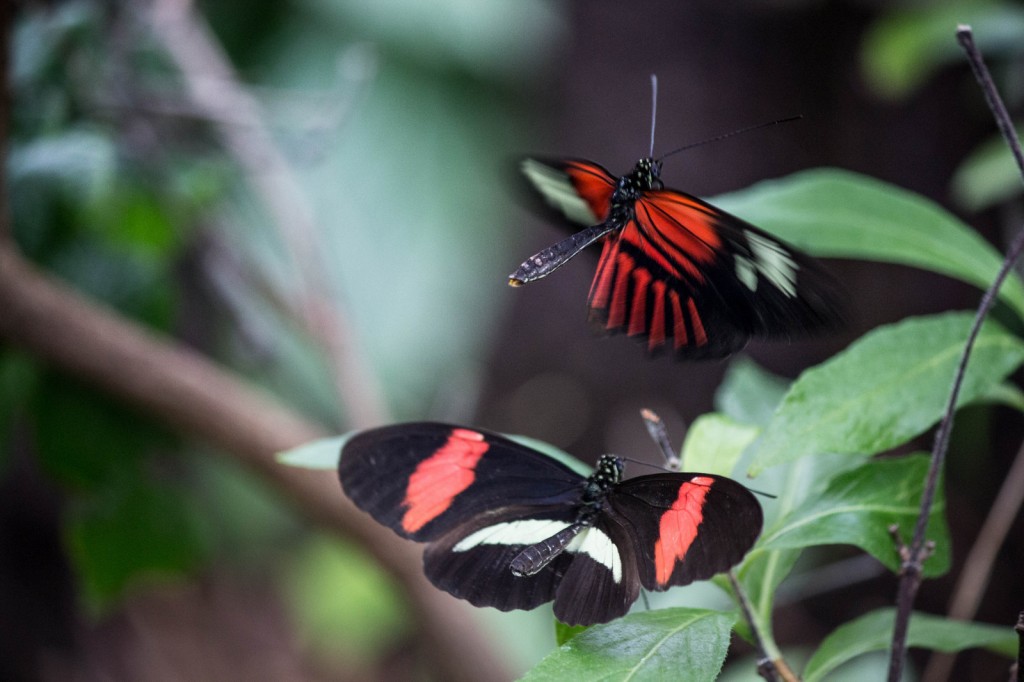After viewing the IMAX movie "Flight of the Butterflies," I've had this fascination. This weekend (the second time in two weekends) I traveled to the Insectarium of the St. Louis Zoo to closely observe live butterflies indoors and to attempt to photograph them with a macro lens, this time using flash. Click on any of these photos for high-res versions of the photos below, which I took today.
 If someone told you that you need to make a small device, less than .1 ounce (3 grams), and it needed to fly and be capable of making controlled landings, you would likely not know where to start. Then add in that this device would need to seek out it's own fuel sources using its long extendable proboscis--a device that might make you think that the butterfly is a tiny flying elephant. It would need to avoid eating foods that were not appropriate. It would need to
If someone told you that you need to make a small device, less than .1 ounce (3 grams), and it needed to fly and be capable of making controlled landings, you would likely not know where to start. Then add in that this device would need to seek out it's own fuel sources using its long extendable proboscis--a device that might make you think that the butterfly is a tiny flying elephant. It would need to avoid eating foods that were not appropriate. It would need to  recognize conspecifics of the opposite sex. Just Imagine how hard this would be to for a devices this small to be able to recognize others of its same species, especially given that it will use sight and olfactory clues. Just imagine training this device the mechanics of mating and producing viable young. Then imaging training this little device to properly navigate to where it needs to go, sensing out food and mates for its short life span of between 2 weeks and 2 months. Add in the ability to reach flight morphology through a chrysalis stage
recognize conspecifics of the opposite sex. Just Imagine how hard this would be to for a devices this small to be able to recognize others of its same species, especially given that it will use sight and olfactory clues. Just imagine training this device the mechanics of mating and producing viable young. Then imaging training this little device to properly navigate to where it needs to go, sensing out food and mates for its short life span of between 2 weeks and 2 months. Add in the ability to reach flight morphology through a chrysalis stage  and you wouldn't have any engineers that would take you seriously. For more details on how butterflies work, see How Stuff Works.
That was my mindset as I set out to the Insectarium at the St. Louis Zoo today.
Today's bonus is that in the process of struggling to use flash with the macro lens, I learned to drag the flash, capturing some visuals regarding the flight path of several butterflies. Notice the steaks of blur from the wings in the following two photos.
and you wouldn't have any engineers that would take you seriously. For more details on how butterflies work, see How Stuff Works.
That was my mindset as I set out to the Insectarium at the St. Louis Zoo today.
Today's bonus is that in the process of struggling to use flash with the macro lens, I learned to drag the flash, capturing some visuals regarding the flight path of several butterflies. Notice the steaks of blur from the wings in the following two photos.

 Many of us are content to watch butterflies from afar, enjoying their beautiful colors. I'm finding them all the more fascinating up close, thinking of them as almost impossible to comprehend in their phenomenal delicate complexity, even as you are studying them up close.
Many of us are content to watch butterflies from afar, enjoying their beautiful colors. I'm finding them all the more fascinating up close, thinking of them as almost impossible to comprehend in their phenomenal delicate complexity, even as you are studying them up close.



 [More . . . ]
[More . . . ] 









